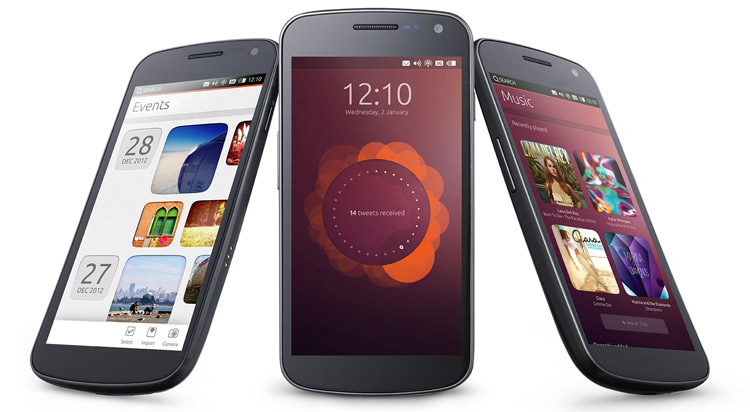An Ubuntu-powered phone has been unveiled by Mark Shuttleworth in London, today.
Calling the product launch a “significant next step in our history”, Shuttleworth demoed the device and spoke of Canonical’s plans for taking the device to an already saturated mobile market.
And the interface of the OS is, possibly more than the brand-name behind it, going to drive adoption.

Delivering a personalised full screen-to-screen experience – with a ‘welcome screen, not a lock screen’ – the Ubuntu Phone proffers ‘more screen space for your apps than any other mobile OS’.
“We also invited a way to use an app without having to use buttons at all via a voice-controlled ‘HUD’.
Availability
So when can you get one? Sadly not just yet. Although talks are taking place no major vendor has yet signed up to ship the device.
But there is hope.
Canonical are ‘confident’ a major manufacturer will ship Ubuntu for Android this year; that will be the first step. But the first pure Ubuntu Phone devices will appear towards the end of the year.
The device will be shown off later this month at the CES event.

Low-end Phones
Unlike Android, Ubuntu Phone OS has been designed from the ground up to deliver a ‘crisper, sharper’ experience on low-powered devices – a market segment Shuttleworth sees as being key to adoption.
These ‘starter smartphone’ users will, he says benefit from a leaner, ‘less complex’ user experience than rivals. Something he says emerging markets are calling out for.
…you will be able to download and install the Ubuntu Phone OS on certain device handsets
Although Canonical’s ‘primary market’ will be selling Ubuntu Phones via retail, and making a cut from such sales, you will be able to download and install the phone OS on certain device handsets.
So far the ‘reference’ device appears to be the previous generation of Google’s Nexus handset. While it’s entirely likely that images for other devices will appear along the line, Shuttleworth told us that retro-fitting phones is not their ‘priority’.
It’s all about the OEM/Carrier deals.
Specifications
So what sort of guts does it take to run the phone OS? Or, to put it another way, how ‘lean’ is ‘lean’?
This is where things get interesting.
A “low end” Ubuntu Phone will require, at a minimum:
- Dual-core A9 ARM Processor
- 1GB of RAM
- 4GB Flash Storage + SD
- 800×400 WVGA Screen
- Multi-touch
To run the phone with ‘convergence’ enabled (a fancy way of saying ‘you can dock it and it will run a full desktop) the requirements are a bit higher:
- Quad-core A9 ARM Processor
- 1GB of RAM
- 32GB Flash + SD
- Minimum of 720p screen resolution
- Multi-touch
Developing for the Ubuntu Phone
A mobile development suite for Ubuntu Phone will be available later this week. This will allow developers without access to an Ubuntu Phone to run an ’emulated’ version, and begin building and testing their apps for it.
When targeting the ‘Super Phone’ version of Ubuntu Phone OS things get a bit more interesting. Developers will be able to create one app with two interfaces: a smartphone UI, and, when the phone is docked to run as a desktop, a fuller, less touch-centric desktop UI.
Feature Creep
Perhaps the most exciting part of the entire announcement is that many of the innovations shown off as part of the phone UI will be making an appearance in the forthcoming releases of Ubuntu – including changes to the dash, the voice-controlled HUD, and a new ‘snap decisions’ framework.
Not all of these changes will appear in Ubuntu 13.04 but some will.
